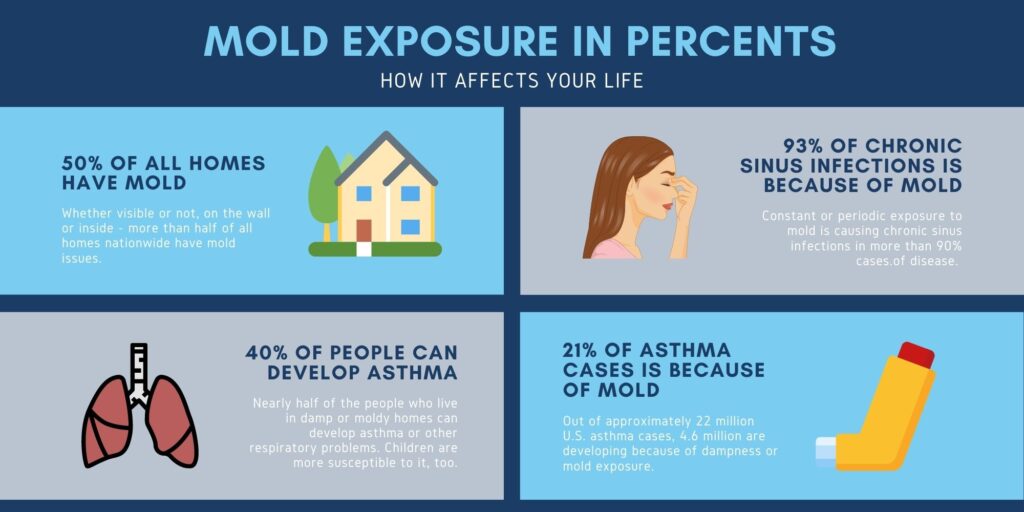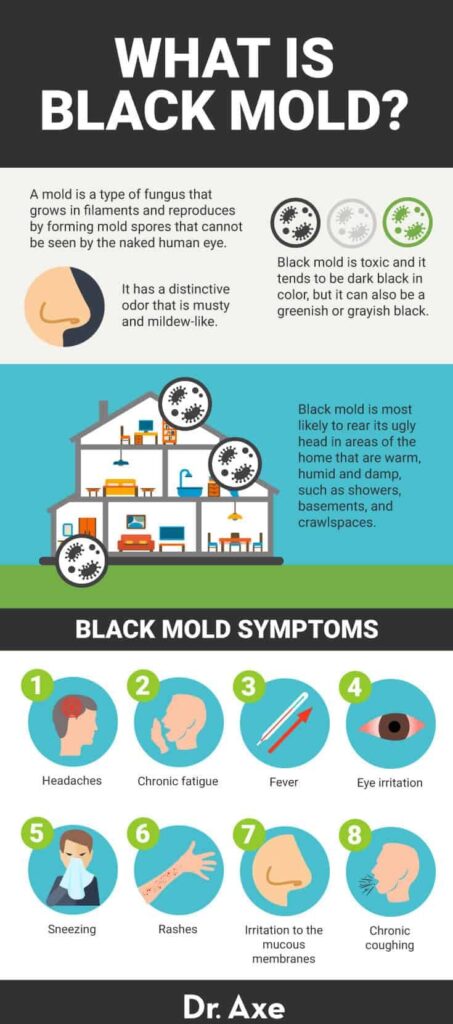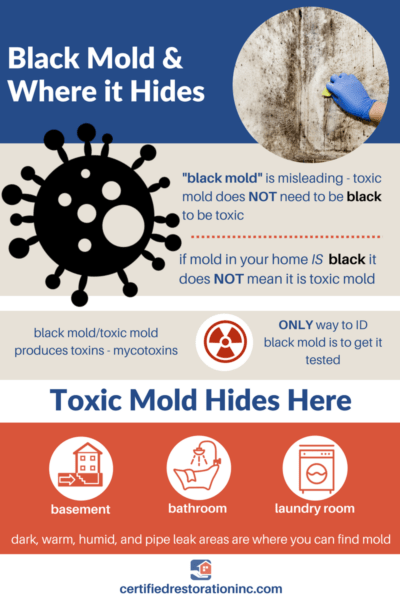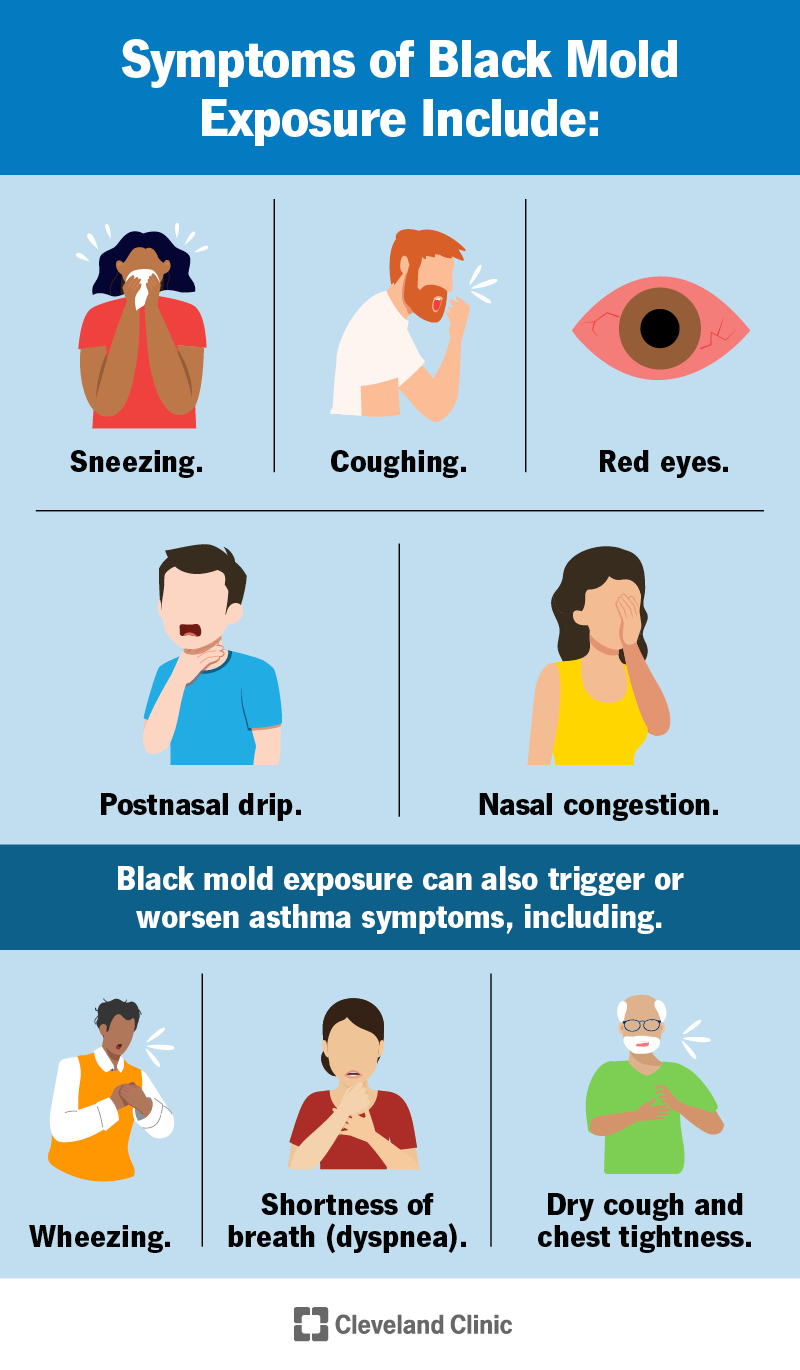In this informative article, you will discover the potential dangers of exposure to toxic mold and the associated health risks that come with it. From respiratory issues to skin irritation, mold can have a significant impact on your well-being. But fear not, as we will also delve into the various remediation methods that can help you eliminate this hazardous substance from your environment. So, read on to learn more about how to safeguard your health and create a mold-free living space.
Understanding Toxic Mold
What is toxic mold?
Toxic mold, also known as black mold or Stachybotrys chartarum, is a type of mold that releases mycotoxins, which are harmful substances that can have detrimental effects on human health. While not all molds are toxic, the presence of toxic mold in indoor environments can pose serious health risks.
How does it grow?
Toxic mold requires specific conditions to grow. It thrives in damp and humid environments, typically with a moisture level above 55%. High levels of moisture, along with the availability of organic materials such as wood, drywall, or carpet, provide an ideal breeding ground for mold spores. Mold spores are tiny airborne particles that are not visible to the naked eye. When these spores land on suitable surfaces and find the right conditions, they start to grow and multiply.
Where is it commonly found?
Toxic mold can be found in various locations both indoors and outdoors. Indoors, it is commonly found in areas with high humidity and moisture, such as bathrooms, kitchens, basements, and areas affected by water damage or leaks. It can also grow behind walls, under carpets, and in crawl spaces. Outdoors, mold can be found in places like decaying vegetation, soil, and wet or damp areas.
Factors contributing to mold growth
Several factors contribute to the growth of toxic mold. Excessive moisture, inadequate ventilation, water leaks, high humidity levels, and a lack of sunlight are common contributors. Additionally, poor building maintenance, such as failing to address water damage promptly or neglecting to fix leaks, can create an environment conducive to mold growth. Damp environments and areas with stagnant air are particularly vulnerable.
Symptoms of Mold Exposure
Respiratory symptoms
Exposure to toxic mold can result in respiratory symptoms such as coughing, wheezing, shortness of breath, and chest tightness. These symptoms may resemble those of allergies or asthma, making it crucial to identify the underlying cause.
Allergic reactions
Allergic reactions to mold spores can lead to sneezing, runny or stuffy nose, itchy or watery eyes, and throat irritation. People with pre-existing allergies or respiratory conditions may experience more severe symptoms.
Skin irritations
Contact with toxic mold can cause skin irritations such as rashes, hives, itching, or redness. These reactions may occur directly from touching the mold or from exposure to airborne mold spores.
Neurological symptoms
Some individuals exposed to toxic mold may experience neurological symptoms such as headaches, dizziness, difficulty concentrating, memory problems, or confusion. These symptoms can be persistent and impact daily functioning.
Fatigue and weakness
Chronic exposure to mold can cause persistent fatigue and weakness. This can manifest as a lack of energy, tiredness, and a general feeling of physical and mental exhaustion.
Digestive problems
In some cases, exposure to toxic mold can result in digestive issues such as nausea, vomiting, diarrhea, or abdominal pain. These symptoms may be mistaken for other gastrointestinal conditions.
Eye and vision issues
Mold exposure may lead to eye and vision problems, including redness, itching, watery eyes, sensitivity to light, and blurred vision. These symptoms can be particularly bothersome and affect daily activities.
Sinus problems
Toxic mold exposure can cause sinus congestion, sinus pressure, sinus headaches, and chronic sinus infections. These symptoms may persist despite typical treatments for sinus issues.
Immune system effects
Exposure to toxic mold can weaken the immune system, making individuals more susceptible to infections and illnesses. It can also exacerbate existing conditions, leaving individuals more vulnerable to respiratory infections, allergies, and other health concerns.
Other miscellaneous symptoms
In addition to the more commonly reported symptoms, exposure to toxic mold can also lead to a range of other miscellaneous symptoms such as muscle aches, joint pain, sensitivity to temperature changes, excessive thirst, and metallic taste in the mouth.
Health Risks of Toxic Mold
Respiratory conditions
Individuals exposed to toxic mold are at an increased risk of developing respiratory conditions such as chronic bronchitis, asthma, and respiratory infections. The mycotoxins released by mold can irritate and inflame the respiratory system, leading to long-term health issues.
Allergies and asthma
Toxic mold exposure can trigger allergic reactions and worsen existing allergies and asthma. It can provoke asthma attacks and cause allergy symptoms such as nasal congestion, sneezing, and skin reactions.
Toxic effects on organs
Prolonged exposure to mycotoxins from toxic mold can have toxic effects on various organs in the body. These toxins can enter the bloodstream and potentially damage the liver, kidneys, and other vital organs.
Neurological disorders
Research suggests a possible link between toxic mold exposure and neurological disorders. The mycotoxins released by mold can have neurotoxic effects, potentially contributing to conditions such as cognitive impairment, memory loss, and neurological symptoms.
Impact on mental health
Living or working in an environment contaminated with toxic mold can have a significant impact on mental health. The persistent symptoms, decreased quality of life, and the stress of dealing with the mold issue can lead to anxiety, depression, and other mental health disorders.
Immune system dysfunction
Toxic mold exposure can disrupt the immune system’s normal functioning, making individuals more susceptible to infections and weakening the body’s ability to fight off illnesses. This can lead to frequent infections and prolonged recovery times.
Reproductive issues
While the research on the effects of mold exposure on reproductive health is limited, some studies suggest a potential link between mold exposure and fertility issues, pregnancy complications, and adverse birth outcomes. Further research is needed to establish a conclusive relationship.
Cancer risks
Although the direct link between toxic mold exposure and cancer has not been definitively established, some studies have shown an association between certain types of mold and an increased risk of developing certain cancers, such as lung cancer and throat cancer.
Long-term health consequences
Long-term exposure to toxic mold can have severe health consequences. The accumulation of mycotoxins in the body over time can lead to chronic health conditions, persistent symptoms, and a reduced quality of life. It is important to address mold issues promptly to minimize the risk of long-term health effects.
Testing and Diagnosis
Mold testing methods
Mold testing can help identify the presence of mold and determine the type and concentration of mold spores in the environment. Common methods include air sampling, surface sampling, and bulk sampling. These tests are typically conducted by professionals trained in mold assessment and remediation.
Professional mold inspection
If you suspect a mold problem in your home or workplace, it is advisable to seek help from a professional mold inspector. They will conduct a thorough inspection, identify the source of the mold, assess the extent of the contamination, and provide recommendations for remediation.
Medical diagnosis
If you are experiencing symptoms of mold exposure, it is essential to consult a healthcare professional. They can evaluate your symptoms, take a detailed medical history, and conduct appropriate diagnostic tests to determine if mold exposure is the underlying cause of your health issues.
Distinguishing toxic mold
Not all molds are toxic, and it can be challenging to visually distinguish toxic mold from non-toxic varieties. Professional mold testing is necessary to determine if the mold present is toxic and if remediation is required.

Remediation and Prevention
Identifying the source
The first step in mold remediation is identifying the source of the mold and addressing any underlying moisture or humidity issues. Fixing leaks, improving ventilation, and addressing any water intrusion problems are crucial in preventing mold growth.
Professional mold remediation
For extensive or severe mold contamination, it is recommended to hire a professional mold remediation company. These professionals are trained in safely removing mold, minimizing the risk of cross-contamination, and ensuring thorough cleanup of affected areas.
DIY mold removal
In cases of small-scale mold problems, some individuals may choose to attempt DIY mold removal. However, caution is advised, as disturbing mold without proper precautions can lead to the release of mold spores into the air, potentially exacerbating the problem. Proper safety measures and containment procedures should be followed.
Preventing mold growth
Preventing mold growth is key in maintaining a healthy indoor environment. This can be achieved by controlling moisture levels, using dehumidifiers in areas prone to moisture, promptly fixing leaks and water damage, improving ventilation, and regularly cleaning and inspecting areas at risk for mold growth.
Safety Measures During Remediation
Personal protective equipment
During mold remediation, it is essential to use personal protective equipment (PPE) to minimize exposure to mold and mycotoxins. This may include wearing gloves, goggles, respirators, and protective clothing to prevent inhalation or direct contact with mold spores.
Containment and isolation
To prevent the spread of mold spores, it is crucial to isolate and contain the affected areas during the remediation process. This can be achieved by using plastic sheeting, creating negative air pressure, and sealing off ventilation systems.
Proper ventilation
Proper ventilation is important during mold remediation to ensure fresh air circulation and to minimize the accumulation of mold spores. Opening windows, using fans, and utilizing air purifiers can help improve air quality.
Cleaning and sanitizing
Thorough cleaning and sanitizing of affected surfaces is essential during mold remediation. This includes using appropriate cleaning solutions specifically designed to eliminate mold contaminants safely. It is important to follow proper cleaning protocols to avoid spreading mold spores.
Disposal of contaminated materials
Any materials or items that cannot be effectively cleaned or remediated should be safely disposed of. This includes porous materials such as carpets, drywall, and insulation that may have been heavily contaminated with mold.

Legal Considerations
Landlord and tenant rights
Landlords have a legal responsibility to provide safe and habitable living conditions for their tenants, which includes addressing mold issues promptly. Tenants have the right to report mold problems to their landlords and request remediation measures. Local tenant-landlord laws vary, so it is important to familiarize yourself with your specific rights and responsibilities.
Workers’ rights
Employees have the right to work in an environment free from hazards, including mold contamination. Employers are obligated to provide a safe workplace and promptly address mold issues to protect their employees’ health.
Homeowner’s insurance
Homeowner’s insurance coverage for mold-related issues can vary depending on the policy and the circumstances surrounding the mold problem. It is advisable to review your insurance policy and consult with your insurance provider to understand your coverage and claim options.
Liability and negligence
Liability and negligence can come into play in cases where mold-related health issues arise. Depending on the circumstances, landlords, property owners, employers, or contractors may be held responsible for failing to address mold issues properly or neglecting their duty of care.
FAQs about Toxic Mold
Can mold exposure be fatal?
In rare cases, toxic mold exposure can lead to severe health complications, especially in individuals with compromised immune systems or pre-existing respiratory conditions. However, mold-related fatalities are extremely rare.
Can you recover from toxic mold exposure?
Recovery from toxic mold exposure depends on various factors, including the severity of the exposure, the individual’s overall health, and the promptness and effectiveness of remediation measures. With proper medical treatment, removal from the contaminated environment, and addressing any underlying health issues, individuals can often recover.
What is the cost of mold remediation?
The cost of mold remediation can vary significantly depending on various factors, such as the extent of the mold contamination, the size of the affected area, the location, and the required remediation methods. It is recommended to obtain multiple quotes from professional mold remediation companies to get an accurate estimate.
How long does it take to remediate a mold problem?
The duration of mold remediation depends on the size and complexity of the mold problem. Smaller-scale remediation can typically be completed within a few days, while larger or more severe cases may take several weeks. Hiring a professional mold remediation company can help expedite the process.
Can I stay in my home during mold remediation?
In most cases, it is advisable to temporarily vacate the premises during mold remediation to minimize exposure to mold spores and the potential health risks. However, this is dependent on the extent of the mold contamination and the recommendations of the mold remediation professionals.
How can I prevent mold growth in my home?
Preventing mold growth in your home can be achieved by controlling moisture levels, improving ventilation, promptly fixing any leaks or water damage, regularly cleaning and inspecting areas prone to mold growth, and using dehumidifiers in areas with high humidity.
Is the presence of mold always visible?
No, the presence of mold is not always visible. Mold can grow in hidden or inaccessible areas such as behind walls, under carpets, or in ventilation systems. Musty odors, water stains, or the presence of other mold indicators can suggest the presence of mold even if it is not immediately visible.
Can I sue my landlord for mold-related health issues?
Depending on the circumstances, it may be possible to sue a landlord for mold-related health issues. However, the feasibility of such a lawsuit depends on factors such as the landlord’s responsibility for addressing the mold issue, the severity of the health issues, and applicable local laws. It is advisable to consult with a legal professional for specific guidance.

Professional Help and Resources
Finding a mold remediation specialist
Finding a reputable mold remediation specialist is crucial for ensuring effective and safe mold removal. Seek recommendations from trusted sources, check for certifications or affiliations with professional organizations, and request references before hiring a mold remediation company.
Local health departments and agencies
Local health departments and agencies can provide valuable resources and information regarding mold-related health concerns. They may offer guidance, educational materials, and referrals to appropriate professionals.
National organizations and helplines
National organizations and helplines dedicated to mold education and remediation are excellent resources for information and support. They can provide guidance on mold-related health concerns, offer educational materials, and connect individuals with professionals and services.
Online resources for mold education
There are numerous online resources available that provide comprehensive information on mold, its health effects, testing methods, remediation techniques, and preventive measures. These resources can be helpful for individuals looking to educate themselves about mold-related issues.
Conclusion
Recognizing and addressing mold exposure symptoms is essential for protecting your health and the health of those around you. Understanding the health risks associated with toxic mold and taking prompt remediation and prevention measures are crucial for maintaining a safe living and working environment. It is always advisable to seek professional guidance and assistance when dealing with mold-related issues to ensure effective remediation and minimize health risks. Remember to prioritize your well-being and take the necessary steps to create a mold-free environment.

